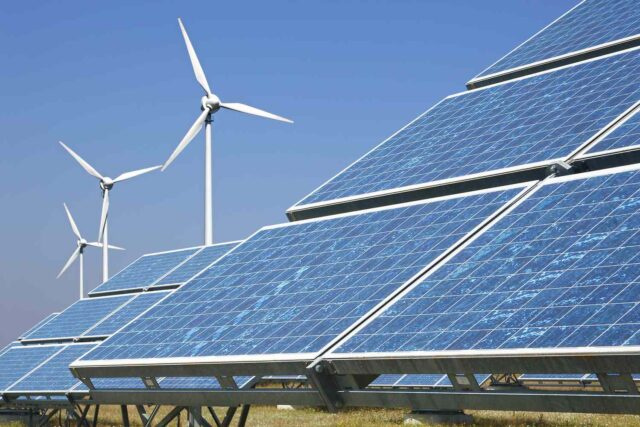Renewable energy has overtaken coal as the world’s largest source of electricity generation for the first time, marking a milestone moment in the global transition towards cleaner energy. According to new figures from the energy think tank Ember, renewables supplied more electricity in the first half of 2025 than coal, a development described as a “crucial turning point” for the planet’s power systems. The data show that although global electricity demand continues to rise, the expansion of solar and wind power was so strong that it met all the additional demand. This growth even contributed to a small decline in coal and gas generation. Yet, Ember cautions that the picture remains uneven across different regions.
Developing nations led by China spearheaded the surge in clean power, while wealthier regions such as the United States and the European Union saw increased reliance on fossil fuels. Coal, despite its gradual decline, remained the world’s single largest source of electricity generation in 2024 — a position it has held for more than half a century, according to the International Energy Agency.
China’s Clean Energy Acceleration
China continues to dominate the global clean energy landscape, adding more solar and wind capacity in the first half of 2025 than the rest of the world combined. The country’s expansion in renewable generation outpaced rising domestic electricity demand, resulting in a 2% decline in fossil fuel use. India followed a similar trajectory, albeit at a slower pace, as its electricity demand growth moderated and renewables expanded, leading to cuts in coal and gas use.
Fossil Fuels Resurgent in Wealthy Economies
In contrast, developed economies have seen a setback in their energy transitions. The United States experienced a faster rise in electricity demand than in clean power output, pushing greater dependence on fossil fuels. Meanwhile, Europe’s electricity mix suffered from months of weak wind and hydropower generation, forcing a temporary return to coal and gas to fill the gap. Despite these regional disparities, Ember’s senior analyst, Malgorzata Wiatros-Motyka, said the overall shift was highly significant. “It marks the beginning of a phase where clean power is keeping pace with demand growth,” she said.
Solar Power Dominates Global Expansion
Solar energy led the charge, accounting for 83% of the increase in global electricity generation. For the third consecutive year, solar was the largest source of new electricity added worldwide. Notably, most solar power generation — around 58% — now occurs in lower-income countries that have rapidly embraced solar technologies. The transformation has been underpinned by extraordinary cost reductions. Solar panel prices have fallen by roughly 99.9% since 1975, making solar power the cheapest energy source in many markets. This dramatic affordability allows new solar industries to emerge within a single year, particularly in countries where grid power remains costly or unreliable.
Pakistan provides a striking example. In 2024, it imported enough solar panels to generate 17 gigawatts (GW) of electricity — double the previous year’s imports and equivalent to nearly a third of the country’s current installed capacity. Across Africa, solar imports increased by 60% year on year to June 2025, with South Africa leading the growth and Nigeria surpassing Egypt to become the continent’s second-largest solar generator. Smaller nations are also seeing exponential growth. Algeria’s solar imports rose 33-fold, while Zambia’s increased eightfold and Botswana’s sevenfold over the same period.
New Challenges from Rapid Growth
The speed of solar adoption has brought unintended consequences in some regions. In Afghanistan, for instance, the proliferation of solar-powered irrigation pumps has caused a rapid fall in groundwater levels. Research led by Dr David Mansfield and satellite data firm Alcis warns that several provinces could face severe water shortages within the next decade, threatening millions of livelihoods.
Contrasting Global Energy Realities
Adair Turner, chair of the UK’s Energy Transitions Commission, noted that the world’s “sun belt” and “wind belt” nations face distinct challenges. Countries in sunnier regions such as Asia, Africa, and Latin America benefit from cheap daytime solar generation that can be paired with falling battery costs to extend supply overnight. By contrast, wind-dominated nations like the UK face higher costs and more complex storage challenges. Wind turbine prices have dropped by only around a third in the past decade, and rising interest rates have pushed up the cost of building new wind farms. Winter wind shortages also complicate supply stability, requiring backup power sources beyond battery storage — a factor that increases system costs.
China’s Global Clean Tech Dominance
Meanwhile, China’s dominance in clean technology continues to expand. In August 2025, its clean tech exports reached a record $20 billion, led by strong growth in electric vehicle (EV) and battery sales. Exports of EVs rose by 26% and batteries by 23%, together now worth more than twice the value of China’s solar panel exports. As the global clean energy race accelerates, Ember’s findings suggest a world at a turning point. Renewable energy is no longer the future — it is now the backbone of the world’s power systems, even as nations grapple with the uneven pace of transition and the new challenges it brings.









